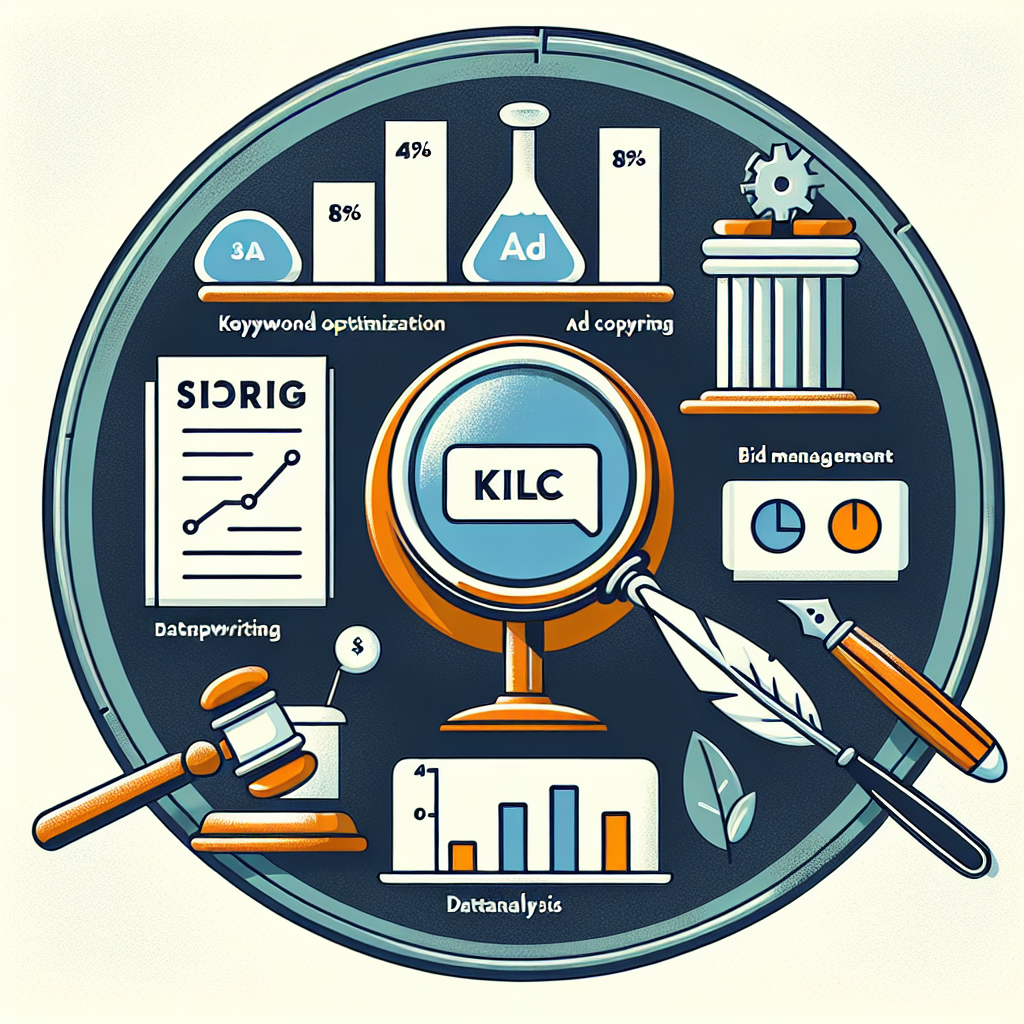Effective SEM Strategies
Are you looking to boost your online presence and drive more traffic to your website? Look no further! In this article, we will explore the world of effective SEM strategies. From search engine optimization (SEO) techniques to social media marketing and email campaigns, we’ve got you covered. Whether you’re a small business owner or a marketing professional, you’ll find valuable insights and tips to enhance your digital marketing efforts. So, let’s dive into the world of SEM and discover the power of these strategies in growing your online presence.

Search Engine Marketing (SEM)
Search Engine Marketing (SEM) refers to the practice of using paid advertising on search engines to drive targeted traffic to a website. It involves strategic planning and execution of various techniques to ensure maximum visibility and reach. SEM encompasses different aspects, including Google Ads, Bing Ads, paid search advertising, and ad campaign management, all of which play a crucial role in boosting online presence and driving conversions.
Google Ads
Google Ads is an advertising platform developed by Google that enables businesses to display clickable ads on Google’s search results pages. It allows advertisers to target specific keywords related to their products or services and bid on them to have their ads displayed when users search for those keywords. Google Ads offers various ad formats, including search ads, display ads, video ads, and more. With its comprehensive targeting options and robust analytics, Google Ads is an indispensable tool for SEM professionals.
Bing Ads
Bing Ads is an advertising platform offered by Microsoft, which allows businesses to display ads on Bing and Yahoo search engines. Although Bing has a smaller market share compared to Google, it still attracts a significant number of users and can be an effective platform for reaching a specific audience. Bing Ads offers similar features to Google Ads, including keyword targeting, ad scheduling, and budget management. Including Bing Ads in your SEM strategy can help expand your reach and drive traffic to your website.
Paid search advertising
Paid search advertising, also known as Pay-Per-Click (PPC) advertising, involves paying search engines to display your ads when users enter specific keywords in their search queries. With paid search advertising, you bid on keywords relevant to your business and only pay when users click on your ads. This form of advertising provides instant visibility and allows you to target users who are actively searching for products or services similar to yours. Paid search advertising can be highly effective in driving immediate results and generating qualified leads.
Ad campaign management
Effective ad campaign management is crucial for achieving optimal results in search engine marketing. It involves planning, executing, monitoring, and optimizing advertising campaigns to ensure maximum performance. Ad campaign management includes tasks such as keyword research, ad copy creation, bid management, budget allocation, tracking conversions, and analyzing data to make informed decisions. With proper campaign management, you can enhance the visibility of your ads, improve click-through rates (CTR), and drive high-quality traffic to your website.
Social Media Marketing
Social Media Marketing (SMM) is a powerful strategy that utilizes social media platforms to promote products, engage with the target audience, and drive website traffic. With billions of people actively using social media, it presents an excellent opportunity for businesses to connect and interact with their customers. SMM encompasses a range of activities, including Facebook marketing, Instagram advertising, Twitter promotion, and LinkedIn marketing strategy, all of which enable businesses to build brand awareness, generate leads, and foster customer loyalty.
Facebook marketing
Facebook is the largest social media platform, boasting billions of active users. With its highly targeted advertising capabilities, Facebook Marketing provides businesses with an effective way to reach their desired audience. Businesses can create a Facebook Page and run targeted ad campaigns to increase brand visibility, drive website traffic, and generate leads. Facebook offers a variety of ad formats, including image ads, video ads, carousel ads, and more, allowing businesses to showcase their products or services in a visually appealing and engaging manner.
Instagram advertising
Instagram, owned by Facebook, is a popular visual-centric platform that allows users to share photos and videos. With its increasing popularity, Instagram presents a significant opportunity for businesses to reach a younger and highly engaged audience. Instagram advertising enables businesses to create eye-catching ads and target them to specific demographics, interests, or behaviors. Whether through photo ads, video ads, or stories ads, Instagram provides businesses with a visually appealing platform to showcase their brand and products, increasing awareness and driving conversions.
Twitter promotion
Twitter is a microblogging platform that enables users to engage with others through short messages, known as tweets. With its fast-paced nature, Twitter is an ideal platform for real-time interactions and staying updated with current trends and news. Twitter promotion allows businesses to create targeted ad campaigns and engage with their audience through tweets, hashtags, and trending topics. By leveraging Twitter’s advertising features, businesses can promote their brand, increase their follower base, and drive traffic to their website.
LinkedIn marketing strategy
LinkedIn is a professional networking platform that connects professionals and businesses from various industries. It offers unique opportunities for businesses to showcase their expertise and engage with a professional audience. LinkedIn marketing strategy involves creating a strong company profile, sharing valuable content, and utilizing LinkedIn’s advertising platform to target professionals based on their job titles, industries, or company sizes. With LinkedIn’s targeting options and networking capabilities, businesses can establish thought leadership, build connections, and generate leads within the professional community.
Content Marketing
Content Marketing is an essential component of any digital marketing strategy, involving the creation and distribution of valuable and relevant content to attract and engage a target audience. Content marketing plays a crucial role in establishing brand authority, building customer trust, and driving organic traffic to a website. This section covers different aspects of content marketing, such as blog content strategy, content creation tools, video content marketing, and infographic promotion, all of which contribute to a successful content marketing campaign.
Blog content strategy
A blog content strategy outlines the goals, target audience, and topics for a company blog. It involves careful planning and research to create valuable and engaging content that resonates with the target audience. A well-developed blog content strategy includes identifying relevant topics, conducting keyword research, determining the optimal publishing frequency, and establishing a consistent tone and style. By implementing a solid blog content strategy, businesses can drive organic traffic, enhance brand visibility, and establish themselves as industry leaders.
Content creation tools
Content creation tools are essential for streamlining the content creation process and improving productivity. These tools range from text editors and graphic design software to project management platforms and content planning tools. Content creation tools help marketers and content creators to brainstorm ideas, collaborate with team members, create visually appealing graphics, optimize content for search engines, and schedule content publication. Utilizing these tools can enhance content creation efficiency, deliver high-quality output, and ultimately improve the overall content marketing efforts.
Video content marketing
Video content marketing involves the creation and dissemination of videos to attract, engage, and educate a target audience. Videos have become increasingly popular due to their visual appeal and ability to convey messages more effectively. Video content marketing can include various formats, such as explainer videos, product demos, testimonials, interviews, and vlogs. By leveraging video content, businesses can capture attention, increase brand awareness, and convey complex information in a memorable and engaging way.
Infographic promotion
Infographics are visual representations of information or data, which are designed to present complex concepts in a visually appealing and easy-to-understand format. Infographic promotion involves creating and sharing infographics to educate and engage the target audience. Infographics can be shared on social media platforms, included in blog posts, or used in email marketing campaigns. They are an effective way to grab attention, increase content shareability, and drive traffic to a website. Infographic promotion can amplify the reach of content marketing efforts and enhance brand exposure.
Email Marketing
Email Marketing is a powerful digital marketing strategy that involves sending targeted emails to a list of subscribers. It enables businesses to directly communicate with their audience, build relationships, and drive conversions. This section covers various aspects of email marketing, including email automation, email campaign optimization, email marketing tools, and newsletter best practices, all of which are essential for running successful email marketing campaigns.
Email automation
Email automation allows businesses to send personalized and timely emails to subscribers based on predetermined triggers or actions. With email automation, businesses can create a series of automated emails that nurture leads, onboard new customers, promote products or services, deliver personalized recommendations, send birthday greetings, and more. By utilizing email automation, businesses can save time, deliver relevant content, and ensure consistent communication with their subscribers.
Email campaign optimization
Optimizing email campaigns involves testing and refining various elements to improve their effectiveness and increase engagement. This includes optimizing subject lines, improving email copy, segmenting the email list, A/B testing different designs, and analyzing email open rates and click-through rates. By continually optimizing email campaigns, businesses can ensure that their messages resonate with the audience, maximize open rates, and drive higher conversions.
Email marketing tools
Email marketing tools are software applications that help businesses manage and automate their email marketing campaigns. These tools provide features such as email list management, template creation, scheduling, and analytics. Popular email marketing tools include Mailchimp, Constant Contact, GetResponse, and Sendinblue. Using these tools can streamline the email marketing process, improve efficiency, and provide valuable insights into campaign performance.
Newsletter best practices
Newsletters are a popular form of email marketing that allows businesses to regularly communicate with their subscribers and share valuable content, updates, and promotions. Implementing newsletter best practices is essential to ensure that newsletters are engaging, well-designed, and deliver value to the readers. Best practices include creating compelling subject lines, using a visually appealing design, providing relevant and useful content, and including clear call-to-actions. By following newsletter best practices, businesses can retain subscribers, drive website traffic, and increase conversions.

Digital Analytics
Digital Analytics refers to the collection and analysis of data from various digital marketing channels to gain insights and improve decision-making. It involves the use of tools and techniques to track and measure the performance of websites, ads, campaigns, and user interactions. This section covers different aspects of digital analytics, such as Google Analytics tips, data-driven marketing, web analytics tools, and analytics reporting, all of which help businesses make informed decisions and optimize their digital marketing efforts.
Google Analytics tips
Google Analytics is a powerful web analytics tool provided by Google that helps businesses track and analyze website traffic, user behavior, conversions, and more. To make the most out of Google Analytics, it is important to understand its features and utilize them effectively. This includes setting up goals and conversions, implementing tracking codes, creating custom reports, utilizing advanced segments, and using Google Analytics’ data attribution models. By applying these Google Analytics tips, businesses can gain valuable insights into their website performance and make data-driven decisions.
Data-driven marketing
Data-driven marketing involves using data collected from various sources to drive marketing strategies and decision-making. By analyzing customer data, market trends, and campaign performance, businesses can identify patterns, make informed decisions, and optimize their marketing efforts. Data-driven marketing encompasses activities such as audience segmentation, personalization, A/B testing, and predictive modeling. By leveraging data-driven marketing strategies, businesses can create targeted and personalized experiences for their customers and maximize their return on investment.
Web analytics tools
Web analytics tools are software applications that collect, measure, and analyze website data. These tools provide valuable insights into website traffic, user behavior, conversion rates, and other key metrics. In addition to Google Analytics, which is widely used, there are several other web analytics tools available, such as Adobe Analytics, Hotjar, and Kissmetrics. These tools help businesses understand how their websites are performing, identify areas for improvement, and make data-driven decisions to enhance their online presence.
Analytics reporting
Analytics reporting involves presenting data in a comprehensive and easily understandable format to stakeholders. The goal of analytics reporting is to communicate key findings, trends, and performance metrics to inform decision-making. Effective analytics reporting includes visualizing data through charts and graphs, summarizing insights, and highlighting actionable recommendations. By delivering clear and concise analytics reports, businesses can facilitate discussions, align objectives, and drive improvements in marketing strategies.
E-commerce Marketing
E-commerce Marketing refers to the strategies and techniques used to drive traffic, promote products, and increase sales for online stores. It involves a combination of digital marketing channels, including search engine optimization (SEO), paid advertising, and conversion rate optimization. This section covers different aspects of e-commerce marketing, including online store optimization, e-commerce SEO, product listing ads, and cart abandonment strategies, all of which contribute to the success of an e-commerce business.
Online store optimization
Optimizing an online store involves improving its design, user experience, and functionality to enhance conversion rates and user satisfaction. This includes optimizing product pages, simplifying the checkout process, implementing responsive design for mobile devices, improving website speed, and ensuring secure payment options. Online store optimization helps businesses create a seamless and user-friendly shopping experience, increase customer trust, and drive higher conversions.
E-commerce SEO
E-commerce SEO involves optimizing an online store’s visibility and rankings in search engine results. By optimizing product pages, category pages, and implementing SEO best practices, businesses can improve their organic rankings and attract targeted organic traffic. E-commerce SEO includes keyword research, optimizing meta tags and descriptions, improving website navigation and structure, and optimizing product images. By utilizing e-commerce SEO techniques, businesses can increase their online visibility, attract more customers, and boost sales.
Product listing ads
Product listing ads (PLAs) are paid advertisements that appear in search engine results and showcase specific products with accompanying images, prices, and descriptions. PLAs are highly effective in driving qualified traffic to e-commerce websites as they provide users with relevant product information before they even click on the ad. By optimizing product feeds, creating compelling ad copy, and utilizing targeting options, businesses can maximize the impact of their product listing ads and increase click-through rates and conversions.
Cart abandonment strategies
Cart abandonment occurs when a user adds products to their online shopping cart but leaves the website without completing the purchase. Cart abandonment is a common issue for e-commerce businesses, but it can be mitigated with effective strategies. These strategies include implementing cart abandonment emails, offering incentives or discounts, simplifying the checkout process, and providing clear shipping and return policies. By utilizing cart abandonment strategies, businesses can recover lost sales, improve customer retention, and enhance the overall e-commerce shopping experience.
Influencer Marketing
Influencer Marketing involves collaborating with influential individuals in a specific niche to promote products or services to their audience. Leveraging influencers’ authority and reach, businesses can tap into their existing following and gain credibility and visibility. This section covers different aspects of influencer marketing, including influencer collaborations, influencer outreach, micro-influencers, and influencer marketing platforms, all of which are essential for running successful influencer marketing campaigns.
Influencer collaborations
Influencer collaborations involve partnering with influencers to create content that promotes a brand or its products. Influencer collaborations can take different forms, including sponsored social media posts, product reviews, brand endorsements, and guest blog posts. By collaborating with influencers, businesses can benefit from their authenticity, engage with their followers, and leverage their influence to reach a wider audience. Influencer collaborations can assist in building brand awareness, driving conversions, and establishing credibility.
Influencer outreach
Influencer outreach is the process of identifying and approaching suitable influencers for collaboration. It involves researching influencers relevant to a specific niche, engaging with them, and building relationships. Effective influencer outreach requires personalized and authentic communication, understanding the influencer’s audience and content, and offering value in return. By conducting strategic influencer outreach, businesses can connect with influencers who align with their brand values, audience demographics, and marketing goals.
Micro-influencers
Micro-influencers are individuals who have a smaller but highly engaged and loyal following on social media. Unlike celebrities or macro-influencers, micro-influencers have a more niche-focused audience and often have a higher level of authenticity and engagement. Collaborating with micro-influencers can be advantageous for businesses as they can provide more targeted reach and higher interaction rates. Working with micro-influencers allows businesses to connect with a specific audience segment, maximize authenticity, and drive effective word-of-mouth marketing.
Influencer marketing platforms
Influencer marketing platforms are online platforms that connect businesses with a wide range of influencers for collaboration. These platforms provide a centralized space for brands and influencers to find each other, negotiate partnerships, and manage influencer campaigns. Popular influencer marketing platforms include AspireIQ, Upfluence, and Followerwonk. By utilizing influencer marketing platforms, businesses can streamline the influencer discovery and collaboration process, track campaign performance, and ensure transparency in influencer marketing efforts.
In conclusion, incorporating Search Engine Marketing (SEM) strategies into your digital marketing efforts is crucial for maximizing online visibility and driving targeted traffic to your website. Whether through Google Ads, Bing Ads, paid search advertising, or effective ad campaign management, SEM can significantly impact your online presence. Social Media Marketing provides opportunities to engage with your target audience through platforms like Facebook, Instagram, Twitter, and LinkedIn. Content Marketing helps you establish brand authority and attract organic traffic through strategies such as blog content strategy, content creation tools, video content marketing, and infographic promotion.
Email Marketing enables personalized communication with your audience through automation, optimization, and the use of email marketing tools. Digital Analytics provides valuable insights and data-driven decision-making through tools like Google Analytics, enabling you to enhance your marketing strategies and web analytics. E-commerce Marketing focuses on optimizing your online store, improving your SEO, utilizing product listing ads, and implementing strategies to combat cart abandonment.
Finally, Influencer Marketing presents opportunities for collaborations, outreach, and leveraging the influence of micro-influencers using various platforms. By incorporating these strategies into your digital marketing efforts, you can create a comprehensive and effective marketing campaign that drives results, increases brand awareness, and generates conversions.
















It's great that you talked about how business insurance can provide financial protection against unexpected events and help ensure the…
I like that you mentioned how business insurance is essential for protecting your bottom line and the long-term viability of…